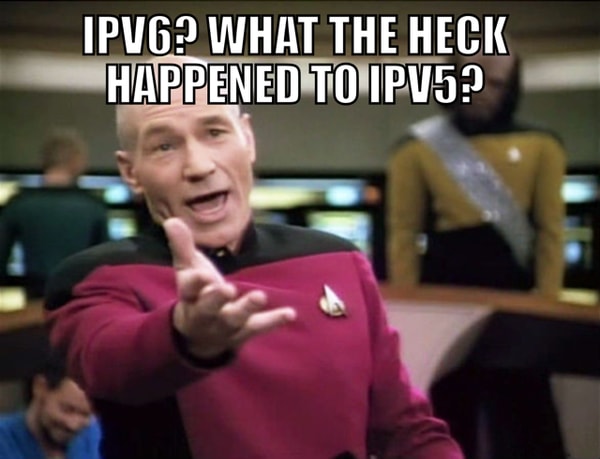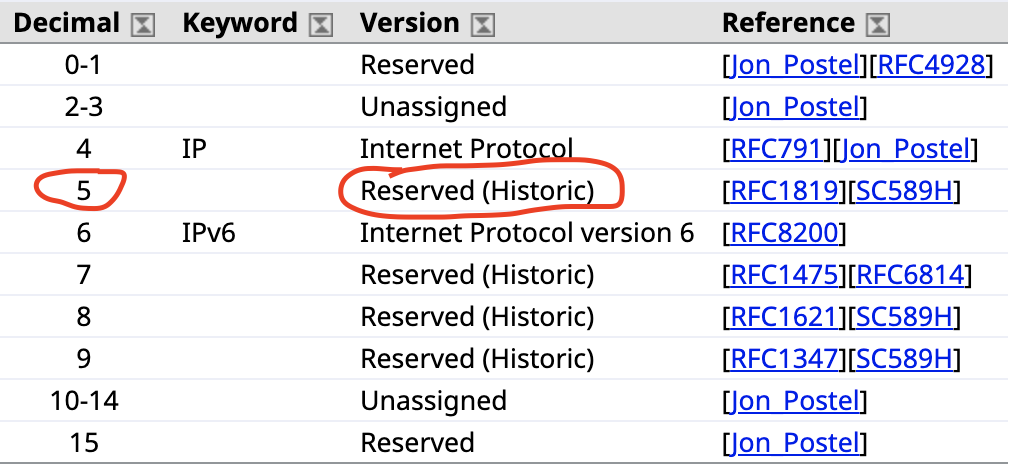Early Days
IPv6 has been around for several decades. Yes, IPv6 isn’t new! The first specification (RFC 1883) was published in 1995. RFC 1883 was later obsoleted by RFC 2460 in 1998. IPv6 is now an Internet standard (RFC 8200)
So how did it all start?
When the Internet protocol was developed in the 1970s, 32 bits for addressing was a lot at the time. In the late 80s, as the Internet grew, there was concern that the 32-bit IPv4 address space would not be sufficient for the future growth of the Internet.
Has anybody made any serious estimates of how long it will be
Roy Smith 1988, http://rms46.vlsm.org/3/0178.txt
before we run out of 32-bit IP addresses? (Silly question; I’m sure a very
great amount of thought has been given to it by many people.) With the
proliferation of such things as diskless workstations, each of which has
its own IP address (not to mention terminal multiplexors which eat up one
IP address per tty line!), it seems like it won’t be too long before we
just plain run out of addresses.
IPv5???

IP version 5 was reserved for the Internet Stream Protocol, Version 2 (ST2). ST2 was an experimental resource reservation protocol intended to provide end-to-end real-time guarantees over the internet, including reserving bandwidth for real-time streams across networks.
ST2 had a fundamental problem; its addressing scheme was similar to that of IPv4. We all know the problem with IPv4. The address depletion concerns also applied to ST2.

IPng
How did we get to IPv6? Well, it isn’t as straightforward as you may think 🙂.
In the early 90s, IETF formed the IPng Area with a directorate consisting of several members. Their main task was to develop a blueprint for selecting the next generation of the Internet protocol RFC 1550. Of course, the proposals went through the usual IETF discussions and consensus in the mailing lists.
IPv6 (or what it became known as, more on this below) wasn’t the sole candidate. There were several other proposals submitted in response to RFC 1550
- TUBA – RFC1347
- PIP – RFC1621, RFC1622
- CATNIP – RFC1707
- SIPP – RFC1710
- NIMROD – RFC1753
- ENCAPS – RFC1955
Of all these proposals, the consensus was reached to have SIPP – Simple Internet Protocol Plus as the new IPng protocol but Modified to 128 bits.
The initial SIPP proposal consisted of a 64-bit address space. IANA allocated version number 6 to IPng, and IPv6 was born, or should I say, became mature.
As all this was happening, “short-term” measures(NAT, CIDR &RFC 1918?) were proposed and adopted to increase the lifeline of IPv4 before we adopted the next generation of IP. It seems like these short-term measures were very effective 🙂 but IPv6 adoption is gradually increasing.
You can read the detailed mailing list discussions that took part back then, together with some other interesting historical articles here
In the next post, we’ll look at what’s new in IPv6 and what it brings apart from an extended address space.
Keep learning!

1 Response
[…] the previous post, we looked at a short history on IPv6 and how discussions and protocols evolved to finally land us […]